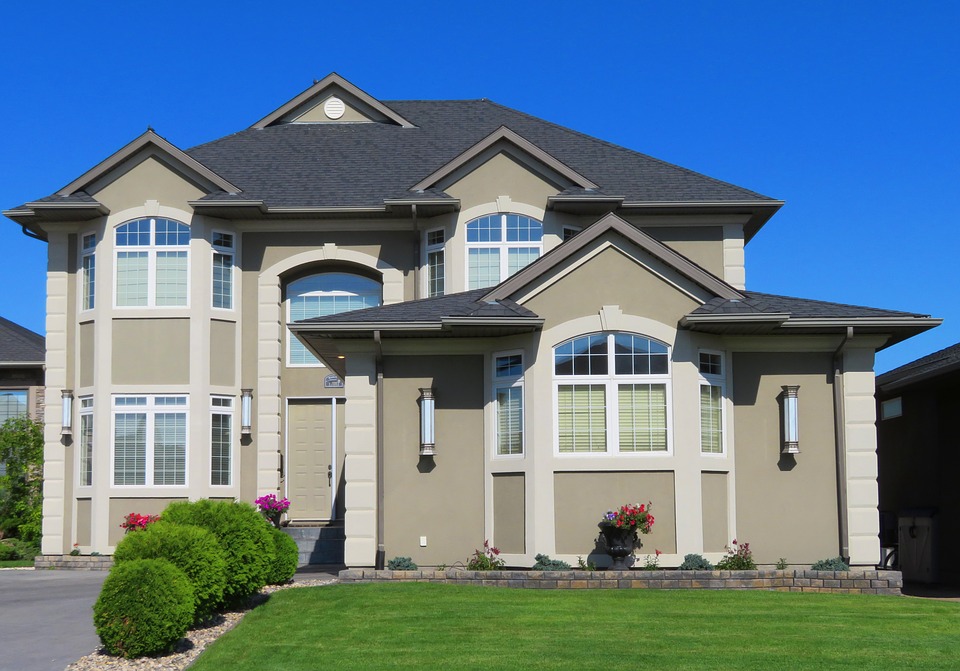
 Does your outdoor living space get flooded or washed out when it rains? It’s hard to enjoy this extension of your home when it doesn’t drain properly. The presence of standing water will damage your lawn, create mold and attract pests. In some cases, it can even jeopardize the structural integrity of your home. So, follow these steps to improve your landscape’s runoff and regain control of your outdoor living space.
Does your outdoor living space get flooded or washed out when it rains? It’s hard to enjoy this extension of your home when it doesn’t drain properly. The presence of standing water will damage your lawn, create mold and attract pests. In some cases, it can even jeopardize the structural integrity of your home. So, follow these steps to improve your landscape’s runoff and regain control of your outdoor living space.
Clean Gutters
The first step to improving your landscape’s runoff is to clean the gutters. Consisting of metal or composite drainage channels, gutters are responsible for catching and guiding water safely away from your home. When it rains, any water that lands on your roof will flow to the gutters, down the downspouts and, hopefully, away from your home. If your gutters are clogged with leaves, dirt, branches and other debris, however, water will simply fall off the side of the roof. Clean your gutters at least once every six months to encourage better runoff and drainage.
Position Downspouts
The way in which your downspouts are positioned will affect your landscape’s runoff. A good rule of the thumb is to include at least one downspout for every 30 feet of gutters. Assuming your roof runs 60 feet wide, that means you should have at least two downspouts on the front and back. These downspouts should be positioned at a slight pitch so that water flows rather than stagnates.
Position Splash Guards
It’s also important that you place downspout splash guards in the right position. Some homeowners assume that the widest end should be placed closest to their home. The correct way to position splash guards, however, is to place the narrowest end closest to your home. This allows water to flow freely down and out the catch basin. When positioning a catch basin with the widest end closest to your home, water will accumulate at the opposite end. Check all your downspout splash guards to ensure they are positioned properly.
Aerate Lawn
Aerating your lawn isn’t just good for the grass; it also improves runoff. As you may already know, aerating involves the use of a special tool that “scores” the soil by creating small holes that are a few inches deep. The primary purpose of aerating is to nourish grass with additional water and nutrients. As water fills the holes, grass is able to absorb it more easily. A secondary benefit, however, is its ability to control runoff. A significant amount of rainwater will run into the holes created through aerating instead of pooling up around your home or patio. Just remember to use caution after aerating your lawn and avoid walking over it. The soil be delicate for the next few days, so you want to avoid any pressure or stress that could otherwise disturb it.
Reseed Grass
In addition to aerating your lawn, you should also reseed bare or dying patches. If there’s one or more areas of your yard where grass is missing, reseeding can help fill it in. Just remember to water and fertilize the area shortly after reseeding it.
Rain Garden
 Thousands of homeowners from across the United States use rain gardens to improve their landscape’s aesthetics and control rainwater. What is a rain garden exactly? A rain garden is simply a collection of flowers or plants that’s used to catch rainwater. When it rains, some of the water will fall onto the plants and flowers, and some of the water will flow to the base of these plants and flowers. When it makes contact, water will absorb into the garden. Creating a rain garden is an excellent way to improve your landscape’s runoff while enhancing its aesthetics in the process.
Thousands of homeowners from across the United States use rain gardens to improve their landscape’s aesthetics and control rainwater. What is a rain garden exactly? A rain garden is simply a collection of flowers or plants that’s used to catch rainwater. When it rains, some of the water will fall onto the plants and flowers, and some of the water will flow to the base of these plants and flowers. When it makes contact, water will absorb into the garden. Creating a rain garden is an excellent way to improve your landscape’s runoff while enhancing its aesthetics in the process.
Permeable Sidewalk and Driveway
While concrete is the most popular material used to construct sidewalks and driveways, it’s not the only material. There are permeable materials that can absorb water and improve runoff. Known as permeable paving, it’s a porous material that’s highly useful for controlling rainwater. Some studies have even found that using permeable paving reduces pollutants and, subsequent, promotes a cleaner environment.
French Drain
When all else fails, consider building a French drain to improve your landscape’s runoff. Also known as a filter drain or sub-soil drain, it’s characterized by a relatively shallow trench that’s filled with gravel or pebbles. As rainwater flows into the trench, it’s guided away from the home. One of the great things about the French drain is its simplicity. Although you can create it with a pipe, the only thing it actually requires is a shallow trench with rocks on top. Rocks stabilize the soil while still allowing water to flow through. Using nothing more than a few bags of rocks from your local home improvement store and a shovel, you can build a French drain in your yard.
If you have any questions regarding how an S&S Fire Pit can enhance your outdoor living space; We can help. https://ssfirepits.com/contact/


